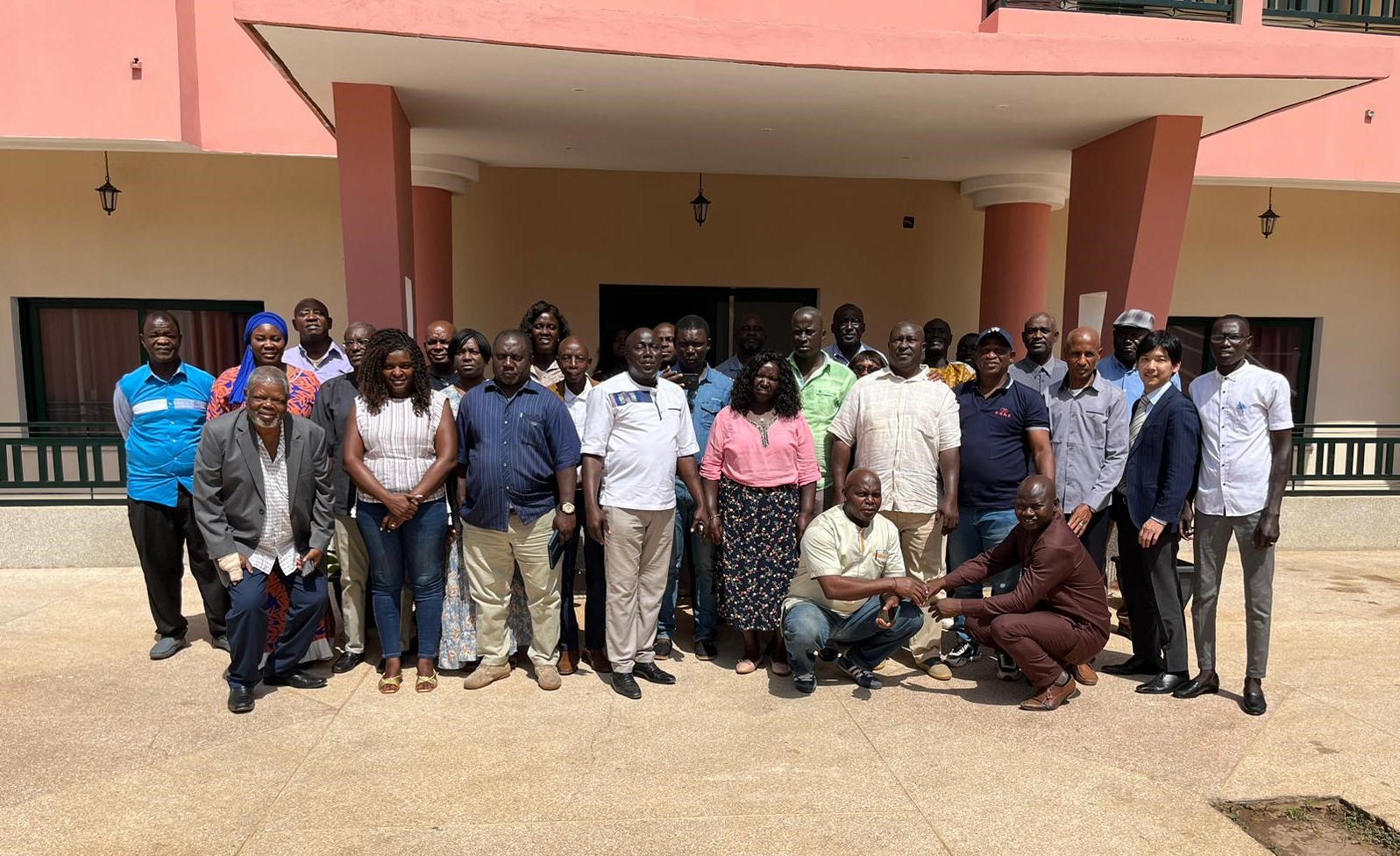Ethiopia, December 2019
CARD Second Working Week for developing NRDS-2 in Ethiopia
The government of Ethiopia has recently classified rice as an ‘emerging crop’ under its perspective plan for growth and transformation (GTP-2). Unlike traditional crops; it is believed that the perspective plan will emphasize the development of the rice value chain in the years to come. Under the second phase of the CARD initiative, the Ministry of Agriculture (MoA) has set up a task force to develop the second National Rice Development Strategy (NRDS-II) for the period 2020-2030. Through a CARD working week held in October 2019, the task force members met and established a strategic framework for the NRDS-II.
Since then, the task force members drafted the contents of the NRDS-II document (zero-draft) and shared it with CARD Secretariat. Following virtual discussions on the contents and the need for affirming targets and indicators for the NRDS-II, the task force requested the CARD Secretariat to organize a second working week to finalize the draft on the NRDS-II. Subsequently, the CARD Secretariat in collaboration with MoA and JICA-Ethiopia office arranged the second working week in Bishoftu, Ethiopia; and delegated a regional consultant for facilitating the discussions and providing the required technical assistance to the process. This note summarizes the outputs from the discussions held and sets a way forward for the process in Ethiopia.
CARD activity and the results
The primary objective of the mission was to guide the task force to reach a consensus on the methodology of target setting and fine-tune the zero-draft of the NRDS-II so that it can be submitted to the ‘Technical Committee (TC)’ of the MoA, which oversees the formulation of rice-related policies in Ethiopia.
The second working week on the NRDS-II was held at Bin International Hotel at Bishoftu between the 2nd and 5th of December 2019. About 8 participants representing the various departments of the Ministry of Agriculture, Agriculture Transformation Agency (ATA) and JICA participated in the discussions. Following a briefing on the expected outputs and general comments on the zero-draft of the NRDS-II; the CARD’s consultant first engaged the participants in brainstorming over the various target-setting techniques.
The task force members acknowledged that the data available on paddy production in the country varies significantly between that of the Central Statistics Agency (CSA) and that of regional Bureaus of Agriculture. Because the CSA follows methodological crop-cutting from the sample plots across the country, the task force has decided to adopt CSA data under the NRDS-II target-setting exercise. However, since a household survey on the consumption of rice has not yet been undertaken in Ethiopia, the sum of domestic production and importation from elsewhere is perceived as the total consumption demand. Since the zero-draft included the domestic production of raw rice (without accounting for the milling recovery), the task force revised the consumption demand by applying 65% on the official paddy production data available from CSA between 2009 and 2016. Using the population figure data of the corresponding years, the task force then estimated the per capita consumption for the same period.
Trends in per capita rice consumption rates revealed that it has been growing at a rate of 0.4268 Kg/year. The task force members acknowledged that the socio-economic drivers that geared the increment in rice consumption will continue at least in the near future. Hence by applying the increment rate on per capita consumption to CSA’s projected population figures of 2020-2030; the total domestic consumption during the NRDS-II period was calculated. By converting these estimations on consumption to paddy rice, the task force members were able to set the targets for achieving self-sufficiency under the NRDS-II.
The zero-draft projected three growth scenarios in rice value chain development viz., (1) business-as-under the NRDS-I, (2) moderate acceleration of the efforts made during the NRDS-I, and (3) aggressive pursuit of rice value chain development. Since the estimated targets for self-sufficiency required an additional area of 320,000 Ha (a 6-fold increase over the base year of 2019) and a 1.8-fold increase in productivity (from 2.712 t/Ha in 2019 to 5 t/Ha by 2030); the task force members have decided to adhere to aggressive mode (Scenario-3) alone under the NRDS-II. The aggressive mode will require an overhaul of institutional and policy environments. The task force members expressed confidence that the current efforts of the government’s policy reforms shall be injected with the strategic aspirations and implementation of the NRDS-II.
Accordingly, the task force reviewed the zero-draft so that it adequately captures the revisions in targets and value chain intervention elements. The zero-draft was also reformatted into a first draft for sharing with the TC of MoA for further review and validation by national stakeholders. The task force will share the contours of the NRDS-II with the TC members through an upcoming meeting in mid-December. During the meeting, the task force members will make PowerPoint presentations on the current situation (trends, challenges and opportunities), strategic framework (goal, targets, objectives, major interventions and indicators), and the envisaged implementation.
Way forward
The task force members have decided to share the finalized draft with the technical committee that oversees the policy formulations in the rice sub-sector and seek their inputs. After reflecting their inputs into the draft, it will be shared with the steering committee members of the MOA for formal approval of a validation process for the NRDS-2. Soon after, the task force will organize a national rice stakeholders’ workshop for validating the NRDS-2. The task force has planned to complete the validation and launch the NRDS-2 by the end of March 2020.









